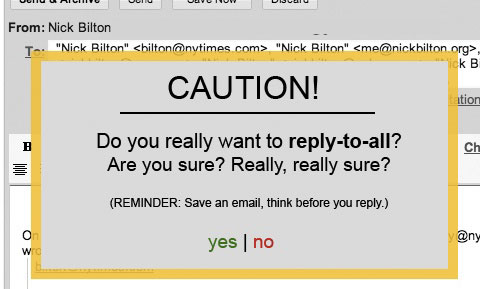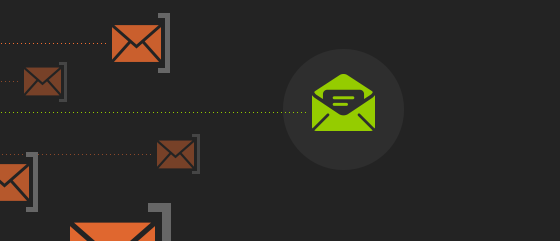Chris passed along an article this morning called “10 Proposals for Fixing the E-Mail Glut” by Nick Bilton and it made me think about the issues I have with email in the workplace.
For me, email is like what Winston Churchill said about democracy, “democracy is the worst form of government except all those other forms that have been tried from time to time.” Email, for me, is the worst form of communication, except for all the others.
I dislike instant messaging as I hate being beholden to a digital chime and a blinking taskbar, and knowing that I have to answer that moment, as a real person is also, somewhere, staring at their screen, waiting. My karma score must have been a machine high in a past life, as I do not have a desk phone. And as for Twitter and Facebook, forget about it, we’re all professionals here, and we can do better.
This leaves email as the best of the worst, so first off, what do I like about it? For me, I love how email exists in its own timeline. If my house is on fire, the immediacy of an instant message will be viewed favorably, but for the lion’s share of correspondance, email is fine. An email comes in and I can read it, leave it, queue it, label it, answer it, forward it, ignore it, or mute it. I am the master of the Technology, and in this information-soaked world, every victory, in however a small battle, counts.
Email also feels more “real” to me. When written well, an email has all of the signs of coming from a real-life human with real-life human things to say. It’ll probably have a salutation, followed up by several sentences of actual sentences with words completely spelled out (also known as English), and then a friendly regards ending it. I like writing those and I like reading them.
In Nick Bilton’s article, he proposed several fixes to his email problems. He mostly focused on adding new buttons and algorithms to his email client, which is like your doctor giving you painkiller for your broken leg, while not bothering to reset the bone.

The issue, and he touches on this with his reply-to-all example (“Are you super sure you want do to that? Hint: you probably don’t.”), is to create a sense of decorum and self-awarenesswhen sending an email. Who is my audience? Whose time am I taking away by writing this email (assuming they read it)? Am I packing the most information in the least amount of space possible?
For me the biggest time sink, and thus annoyance, is that last question: Am I saying everything I need to in this email so that my receiver will be able to do something with it? Often, I’ll get an email that is a partially-formed thought, or a piece of important information is missing. This turns email into a very slow and inefficient form of instant messaging. I know the answer is coming, and my attention has already been broken, so I’ll just keep clicking the inbox link, so I can answer and get on with my day. The frustratingly best emails are the ones that feel like I opened up a James Joyce novel to a random page and started reading. I’m sure this email has some context and meant something to the author, but I’m a little lost. I always write back to get my clue stamp affixed.
For me, the question is not what can my email client do for me, but what can we all do for the art of email. We all know that email is instant. Hitting send makes a bell chime or a link go bold on someone else’s computer. This is a lot of power in the hands of anyone that wants to use it, and understanding that and being self-conscious of email habits would solve most of Mr. Bilton’s email problems.
To sum up, think while you are writing and think before hitting send and everyone’s email boxes will go back to being like real-life mailboxes–what’s in there is usually good, deserves to be read, and you can answer it at the soonest convenient time.
And one more note: none of this applies to funny emails. Man, I love those things.


